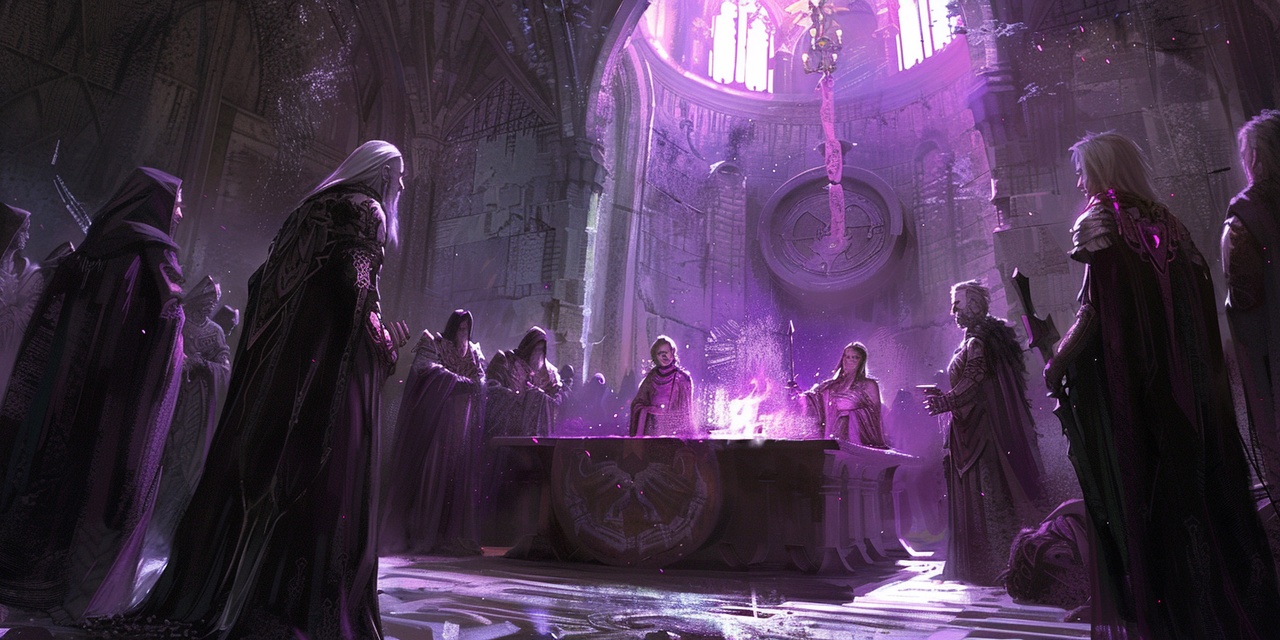The Covenant of Auris
The Crystal Kingdom

The Crystal Kingdom

The Sacred Covenant of Auris:
Drimera, of the doleful veil,
Dread Akrivar in burning mail,
Wise Lyren, steeped in mystery
And sly Myshala, hark’n to me
I pledge to thee, O Lords of Mist,
A promise ever to persist
And strive to more than just survive:
In adaptation I shall thrive.
Lo, though my motherland decays,
Let dread mists part before my gaze
To fall upon a plot of land,
Where flames of progress might be fanned.
Though for this Auris to progress
We must seek more and never less,
The future we advance towards,
Will ever serve our patron lords.
As long as Auris doth exist,
I bind its fate to Lords of Mist.
-Talira d’Raihne in prayer for a Siltori homeland
Drimera, of the doleful veil,
Dread Akrivar in burning mail,
Wise Lyren, steeped in mystery
And sly Myshala, hark’n to me
I pledge to thee, O Lords of Mist,
A promise ever to persist
And strive to more than just survive:
In adaptation I shall thrive.
Lo, though my motherland decays,
Let dread mists part before my gaze
To fall upon a plot of land,
Where flames of progress might be fanned.
Though for this Auris to progress
We must seek more and never less,
The future we advance towards,
Will ever serve our patron lords.
As long as Auris doth exist,
I bind its fate to Lords of Mist.
-Talira d’Raihne in prayer for a Siltori homeland
Founders: Witch-Queen Talira d’Raihne, Prince Averyx d'Arsoren, Princess Seliena d'Mordryth, Princess Xzaris d'Verinnex
Current Ruler: Witch-Queen Pyrathea d’Raihne
Demonym: Aurisian
Population: Roughly 16 million
Territory: The Aurisian Covenant is situated on the continent of Ailizane on a plot of rocky, temperate desert South of the Clockwork Wastes and West of Sol’Valen.
Capital: Aur’arnis
Official Religion: Covenant Catholicism
Racial Distribution: 70% Siltori, 15% Mixed-Blood, 5% Human, 5% Lysanrin, 5% misc. races
Official Language: Silandris
Additional languages: Vallenor, Common
The Crystal Kingdom of Auris represents a covenant forged in remote antiquity between early Siltori reformers and the Mistlords they quit Sol’Valen to worship. In the Age of Wonders, when many elves clung to memories of former grandeur, the progenitors of the Siltori race looked to the future and sought to adapt to the changing times. In their eagerness to upend the rigid status quo in Silfanore, these erstwhile Hytori firebrands took to the worship of a new pantheon and aligned themselves with Ilixidor the Betrayor in hopes of forcing the rapid reforms they believed necessary to retain relevance as a formidable race in Ransera. Though the alliance with Ilixidor was not to last, the elves who turned from Sol’Valen at his side were ever altered. The Siltori born of this shift would settle the sands West of the Hytori motherland to found a realm focused upon the future. Like the desert landscape, ever shifting with the winds, these Siltori pioneers made a compact with their Mistlord cynosures to remain adaptable as never to find themselves stuck in the stagnancy they saw in Sol’Valen those millennia ago. Unto the modern era, The Aurisian Covenant remains a progressive, forward-thinking culture that welcomes diversity of thought and rarely hesitates to explore new avenues of advancement for the sake of routine or tradition.
Table of Contents
—
Major Regions
History
Climate & Geography
Culture
Government
Religion
Diplomatic Relations













